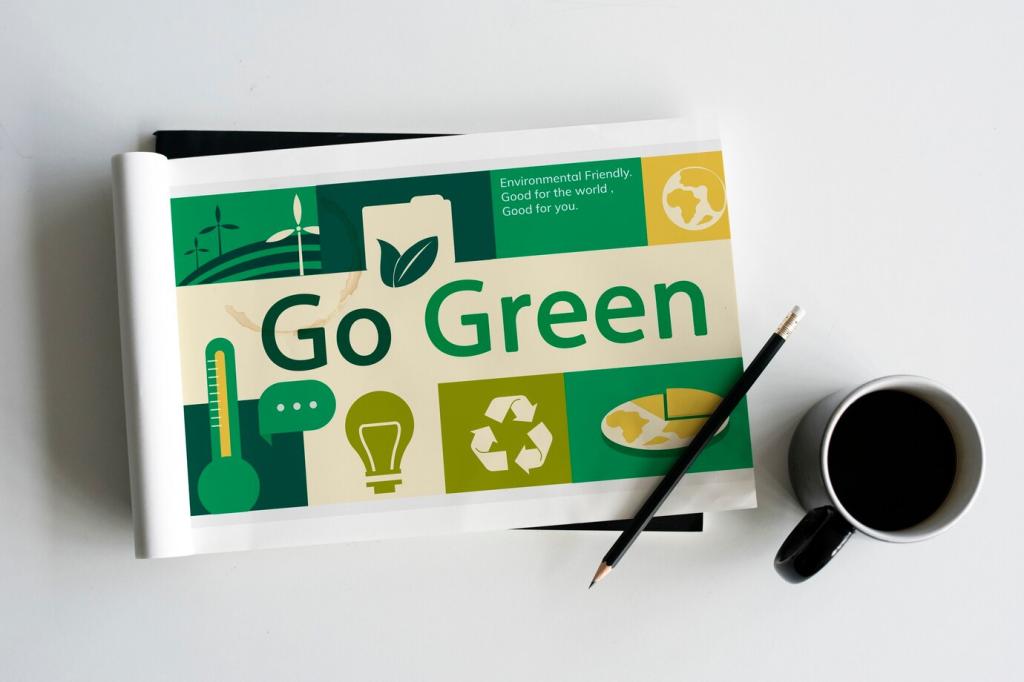
Sustainable Innovations in Green Tech Design
Sustainable innovations in green technology design represent a transformative force for industries, communities, and the environment. As global concerns about climate change and resource scarcity intensify, green tech solutions are evolving to be more efficient, integrative, and accessible than ever before. Designing for sustainability means not only reducing negative impacts but also creating positive change through responsible materials, renewable resources, and smart engineering. This page explores the breakthroughs, principles, and future directions shaping sustainable green technology.

Smart Grids for Efficient Energy
Smart grids employ advanced sensors, communication technologies, and automation to dynamically balance energy supply and demand. By incorporating real-time data, smart grids help utilities detect inefficiencies and direct renewable energy where it’s needed most. The ability to respond to changes like power surges or local generation from rooftop solar panels minimizes waste and empowers consumers. This paradigm shift in energy management supports a larger adoption of renewables by addressing the problem of intermittency and making clean power more reliable.

Distributed Generation Models
Whereas traditional models relied on centralized power plants, distributed generation designs enable homes, businesses, and communities to produce their own energy. This reduces the need for long transmission lines, cutting energy loss and associated emissions. Recent innovations range from microgrids using mixed clean energy sources to peer-to-peer energy trading platforms. These decentralized approaches foster resilience, as local power generation ensures critical infrastructures can remain functional during broader grid disruptions.
Green Building Materials
Low-Carbon Concrete Alternatives
Concrete is responsible for a significant portion of global carbon emissions, driving the demand for green alternatives. Innovations include geopolymer concrete, which uses industrial by-products instead of limestone, and concrete mixes incorporating recycled materials or carbon capture tech. These alternatives not only cut emissions during production but often exhibit superior durability and insulation properties. Such materials are pivotal for greener buildings, especially when adopted at scale in infrastructure projects.
Biodegradable Composites
Biodegradable composites encompass materials engineered from plant fibers, biopolymers, or agricultural byproducts. These alternatives replace conventional plastics and resins, which linger for centuries in landfills. Biocomposites can match the strength and versatility of traditional materials while decomposing naturally at the end of their lifecycle, vastly reducing environmental harm. Applications range from insulation panels to structural beams, reflecting their growing role in green construction.
Recyclable High-Performance Glass
Modern glass technologies have enabled the creation of recyclable windows and facades that enhance energy efficiency. Innovations such as triple-glazing, low-emissivity coatings, and dynamic tinting respond to environmental conditions, reducing heating and cooling loads. Even at the end of use, these advanced glass products can be recycled into new panes, further closing the loop on materials and setting a model for other high-performance building systems.
Greywater systems collect wastewater from sinks, showers, and washing machines, filtering and disinfecting it for non-potable uses like irrigation or flushing toilets. Such systems fundamentally reduce demand on fresh water supplies and cut the volume of wastewater discharged into sewer systems. Advances in filtration, UV sterilization, and compact designs make it easier for homes and buildings to integrate these solutions seamlessly, promoting water stewardship at a local level.

Sustainable Urban Mobility
Electric Vehicle Ecosystems
Electric vehicle (EV) design has progressed far beyond the car itself. Today’s sustainable innovations encompass fast-charging networks, battery recycling, and integration with renewable energy systems. These comprehensive ecosystems reduce reliance on fossil fuels and make it easier for consumers to transition to zero-emission mobility. Recent advances also focus on fleet electrification and public transit, ensuring that the benefits of EVs extend beyond individual drivers to entire communities.
Active Transportation Corridors
Active transportation refers to walking, cycling, and other modes powered by human effort. Cities are increasingly adopting green tech solutions like durable recycled materials for bike lanes, energy-harvesting pavements, and integrated bike-share networks. These corridors not only reduce vehicle use and emissions but also promote public health and spatial equity. By making active transport safer and more convenient, cities encourage sustainable daily habits for residents.
Mobility-as-a-Service Platforms
Mobility-as-a-Service (MaaS) platforms integrate various transport modes—public transit, car-shares, bike rentals—into a single digital interface for users. These platforms optimize routes, decrease travel time, and allow people to compare environmental impacts of their choices. Green tech innovations focus on seamless payment systems, real-time communication, and dynamic pricing that incentivizes low-carbon options, helping cities reduce congestion and transform urban movement patterns.
Circular Economy Approaches
Tracking a product’s lifecycle, from raw material to end-of-use, has become possible through smart tags, blockchain, and IoT sensors. This transparency allows manufacturers and consumers to monitor environmental impacts and ensure responsible disposal or reuse. Such systems also support extended producer responsibility and facilitate closed-loop manufacturing, making sustainable consumption choices straightforward and reliable for everyone involved.


Data-Driven Energy Modeling
Sophisticated software simulates building performance, grid response, or transport patterns to identify inefficiencies and optimize energy use. By modeling variables in virtual environments, designers can foresee the impact of green tech solutions before implementation, reducing risks and costs. These data-driven insights accelerate the adoption of sustainable systems in architecture, city planning, and industrial processes.

Digital Twins in Sustainable Infrastructure
Digital twins are virtual replicas of physical assets, updated with real-time sensor data. They enable monitoring, maintenance, and optimization of everything from wind farms to water utilities. Applying digital twins to sustainable infrastructure allows operators to predict failures, reduce downtime, and fine-tune performance for maximum efficiency. This approach not only preserves resources but also supports resilience as cities and industries evolve.

Artificial Intelligence for Resource Management
Artificial intelligence algorithms are transforming how resources are managed across sectors. From predicting renewable generation to identifying leaks in water systems, AI can process vast data streams to suggest optimal actions. Its ability to automate and improve decision-making in complex systems means waste is minimized and sustainability is prioritized, even in rapidly changing conditions.
Previous slide
Next slide

